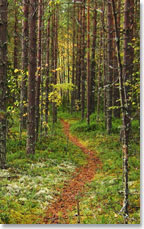 The Wild Foundation defines wilderness as “The most intact, undisturbed wild natural areas left on our planet—those last truly wild places that humans do not control and have not developed with roads, pipelines or other industrial infrastructure.”
The Wild Foundation defines wilderness as “The most intact, undisturbed wild natural areas left on our planet—those last truly wild places that humans do not control and have not developed with roads, pipelines or other industrial infrastructure.”
Wilderness fasting, which has historically been water-only fasting, is associated with biblical figures, such as Jesus who undertook a 40-day fast in the desert. Another population well-known for fasting in the wilderness are the forest monks, a group of monastics who have lived for centuries in the woods. The vision quest conducted by Native American populations involves fasting in the wilderness, usually for a minimum of 4 days.
Fasting in nature helps to accentuate the spiritual aspects of fasting. Buhner said, “Spiritual fasting in wilderness can be a deeply humbling experience . . . When we stop eating, we no longer receive sustenance in physical form but begin instead to rely on powers greater than ourselves and to seek a food only they can bring.”
Sergey Filonov recommended fasting in mountains or near a body of water. He supervised patients at his center at the Altai Mountains in Russia. Filonov described the area as follows, “Clean air, a powerful energy of the mountains and the river Katun, clear starry sky, the chirping of birds, an incredible silence, all this forms a healthful climate.” The benefits of fasting in such a serene setting close to nature cannot be overstated.
There are at least four types of monastic life styles; 1) hermetism, 2) wilderness communities, 3) monasteries, and 4) priestly training seminaries. The more dedicated ascetical and hermetic lifestyle has historically been associated with monks, yogis, and priests, but some laypeople also choose to lead an ascetic life. The Buddha, Francis of Assisi, Jesus, Mahavira, Mohandas Gandhi, and St. Anthony of the Desert were all ascetics who chose to live a mendicant life.
In the first few centuries following the Buddha’s death, Buddhist monks were known as wanderers who lived in caves and forests. They often stayed in close proximity to town so food and other goods were readily available. This particular division of Buddhist monasticism, known as “forest monks,” is still in practice today.